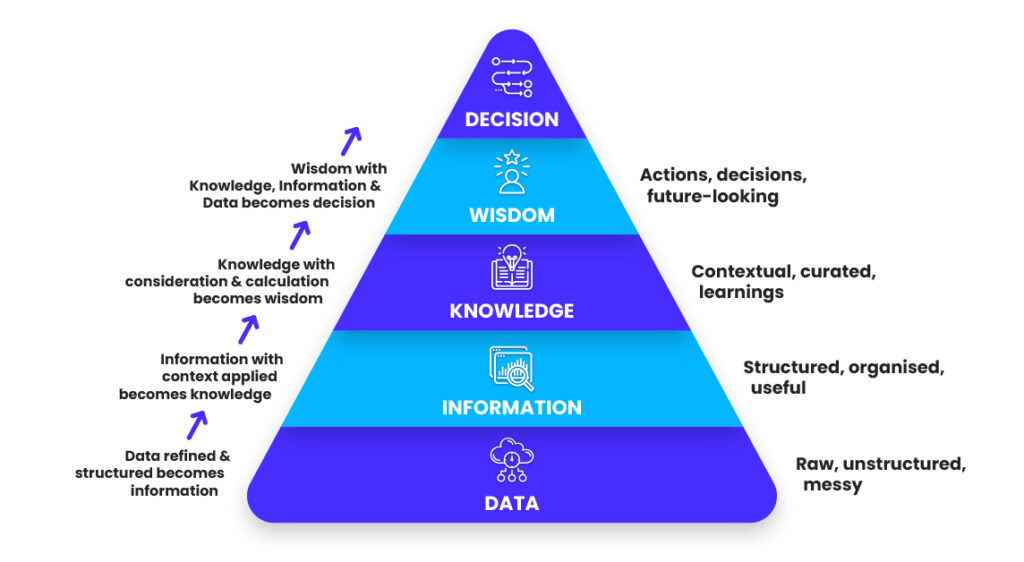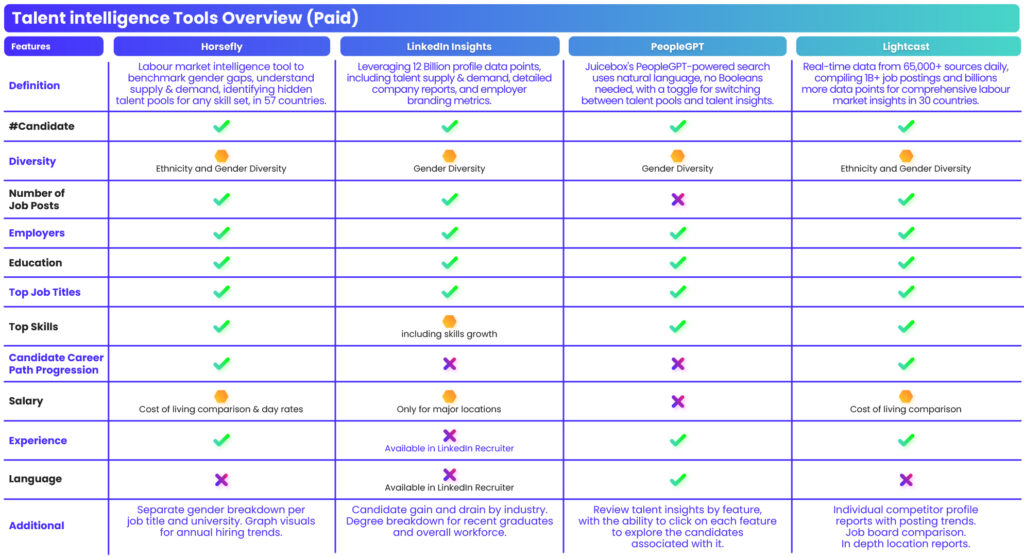How to Get a Seat at the Boardroom: The Recruitment Insights & Data the Business Really Wants
If you want a seat at the (Board) Table, then you need to provide recruitment insights and knowledge that both shapes and impacts business strategy. Time and time again we hear from HR and talent professionals; ‘We’re just seen as a support function’ or ‘Our work isn’t valued’.
Data is often seen as the Holy Grail for changing perceptions and gaining a seat but it’s the stories you can tell from the data that will make the real difference.
 “Data on its own can be a great indicator, but actually it often doesn’t tell the full story, so it needs explanation and some context to bring it to life.” Lee Parker, Luminos Insight.
“Data on its own can be a great indicator, but actually it often doesn’t tell the full story, so it needs explanation and some context to bring it to life.” Lee Parker, Luminos Insight.
We need to find the ‘insights that excite’ and generate conversations at board level.
Part of the problem is that the usual metrics that HR & recruitment teams report on are incredibly useful for the recruitment team, but are focussed on recruitment team performance, rather than joining the dots back up to organisational objectives and goals.
 Andrew Clark, Lead Talent Acquisition Specialist, GlobalLogic agrees; “providing education and guidance on data to the Board is crucial for informed decision-making. HR and Talent Acquisition functions play an integral role in this process because they possess the expertise to identify what data is relevant and how it can drive strategic initiatives.”
Andrew Clark, Lead Talent Acquisition Specialist, GlobalLogic agrees; “providing education and guidance on data to the Board is crucial for informed decision-making. HR and Talent Acquisition functions play an integral role in this process because they possess the expertise to identify what data is relevant and how it can drive strategic initiatives.”
We need to challenge the assumptions of which recruitment metrics are important to the business and those that are important to the teams that are delivering them. We need to use data to build a picture that shows performance against strategic objectives.
 Andrew Clark: “Challenging assumptions about recruitment metrics is essential for ensuring alignment with overall strategic objectives. Rather than relying solely on traditional metrics, such as time to fill or cost per hire, it's important to delve deeper into how these metrics contribute to the broader business goals. By using data to build a comprehensive picture of recruitment performance, organizations can identify which metrics truly matter in driving strategic outcomes. This involves not only considering metrics important to the business but also those that resonate with the teams responsible for delivering recruitment results.”
Andrew Clark: “Challenging assumptions about recruitment metrics is essential for ensuring alignment with overall strategic objectives. Rather than relying solely on traditional metrics, such as time to fill or cost per hire, it's important to delve deeper into how these metrics contribute to the broader business goals. By using data to build a comprehensive picture of recruitment performance, organizations can identify which metrics truly matter in driving strategic outcomes. This involves not only considering metrics important to the business but also those that resonate with the teams responsible for delivering recruitment results.”
In all business the people pillar should be a key strategic priority, after all on average it’s 70% of the cost base and most businesses are nothing without their people.
So what insights shift the dial?
Recruitment and HR teams need to start thinking in line with the Data, Information, Knowledge, Wisdom pyramid. Each building block helps reach a higher level and adds value to the data.
Teams are often fixated by data without linking it to company outputs, and ultimately strategic decisions. Thinking about the decisions that might need to be made first to hit organisational goals and having a hypothesis of what you expect the data will show, will help you to move up the pyramid and gain useful insights.

 “Often organisations can have so much data, and so many statistics, but they don’t take a step back and think about what it is telling them. They forget the “So What?” Some organisations are guilty of finding data to back the decisions that they have already made, instead of using it the other way round, so that they can proactively find trends, information and drive positive outcomes.” Lee Parker, Luminos Insight
“Often organisations can have so much data, and so many statistics, but they don’t take a step back and think about what it is telling them. They forget the “So What?” Some organisations are guilty of finding data to back the decisions that they have already made, instead of using it the other way round, so that they can proactively find trends, information and drive positive outcomes.” Lee Parker, Luminos Insight
Thinking Holistically: The Talent Lifecycle
You can’t just measure the success of recruitment on how quickly and how efficiently hires were made.
We need to start taking a holistic approach and measure the full talent lifecycle to gain a better understanding of the impact of recruitment. Yes, X number of hires might have been made, but what influence have they had on the business?
We need to start asking questions like:
- How good have new hires been?
- What are our retention levels like?
- Are great employees leaving?
 Andrew Clark: “Taking a holistic approach to talent management involves understanding the entire talent lifecycle from acquisition to retention and beyond. While metrics like the number of hires made provide valuable insights into recruitment efforts, they only scratch the surface in terms of understanding the true impact on the business. Instead, TA teams need to track metrics related to employee performance, engagement, retention, and ultimately, their contribution to organizational goals.
Andrew Clark: “Taking a holistic approach to talent management involves understanding the entire talent lifecycle from acquisition to retention and beyond. While metrics like the number of hires made provide valuable insights into recruitment efforts, they only scratch the surface in terms of understanding the true impact on the business. Instead, TA teams need to track metrics related to employee performance, engagement, retention, and ultimately, their contribution to organizational goals.
Rather than solely focusing on time to fill or cost per hire, businesses can also track metrics such as Quality of hire, Employee engagement, employee retention. This holistic approach enables HR and TA teams to not only attract and hire top talent but also to ensure that talent is effectively onboarded, developed, and retained to drive long-term business performance.”
Similarly, being able to link the costs of making the wrong decisions will not only position the HR / Recruitment team as more commercial, but also provide insights on workforce planning.
What skill gaps does the business have currently?
How can we plan effectively to upskill or hire in advance so there isn’t a knock-on effect on business performance?
Andrew Clark: “Planning effectively to upskill or hire in advance requires a strategic approach that aligns with the company's long-term goals and anticipated business needs. Things to consider are forecasting talent, develop talent pipelines, skills gap analysis, internal training.
This is where Talent Intelligence comes in.
Talent intelligence is essentially collecting and analysing data to formulate nuggets of intelligence and wisdom from which decisions can be made. These insights can then be used to change the perceptions and assumptions of the Board.
The data can be taken from both internal and external sources across data pools such as:
- Existing candidate pools
- Internal and former employees
- Passive candidates
- Your competitors
Talent Intelligence can elevate the function to commerciality. By analysing data / trends outside of the organisation - whether industry or competitor data, with the right information HR and Talent Teams can play an integral part in company strategy and direction.
 “Talent Intelligence allows organisations to consider and analyse data from different sources, so you aren’t just relying on one set of information, but considering the bigger picture, and verifying the data through various means. Through this process, you often uncover a range of additional information which is relevant and provides context to the data. This combination of data and market intelligence, often through conversations is so powerful and brings the data to life. ” Lee Parker, Luminos Insight.
“Talent Intelligence allows organisations to consider and analyse data from different sources, so you aren’t just relying on one set of information, but considering the bigger picture, and verifying the data through various means. Through this process, you often uncover a range of additional information which is relevant and provides context to the data. This combination of data and market intelligence, often through conversations is so powerful and brings the data to life. ” Lee Parker, Luminos Insight.
If for example, you see your competitors hiring for a specific skill set, you might assume that they are looking to release a new product or service line, equally if you see that they’ve started hiring in a new territory you can gain insights on plans for expansion. These nuggets can elevate your team far from just a support function. Using Talent Intelligence (TI), you can create ‘competitor battle cards’, which give intelligence on where their competitors are hiring and their business strategy.
Elevating Insights
Sourcing Insights using Talent Intelligence
Think outside the box and flip how you measure time to hire.
 Ellie Dinter-Nethercott, Sourcing Manager, Instant Impact: “Rather than relying on first party data, consider time-to-hire based on the availability of talent.” You can then make relevant recommendations to hiring managers and the wider business on the length of time it will take to fill roles, and influence thinking to become more flexible about who you’re hiring, and the relevant background or skills they need.
Ellie Dinter-Nethercott, Sourcing Manager, Instant Impact: “Rather than relying on first party data, consider time-to-hire based on the availability of talent.” You can then make relevant recommendations to hiring managers and the wider business on the length of time it will take to fill roles, and influence thinking to become more flexible about who you’re hiring, and the relevant background or skills they need.
 “Sometimes Talent Intelligence enables you to take a step back and challenge your hiring. Using insights from the talent pool and competitor analysis, you may find that you need to tweak your process or challenge the expectations within the business. This might be linked to candidate aspirations and motivations, the structure of the role, location, or remuneration. Talent Intelligence allows you to gain a deeper understanding of your recruitment context.” Lee Parker, Luminos Insight.
“Sometimes Talent Intelligence enables you to take a step back and challenge your hiring. Using insights from the talent pool and competitor analysis, you may find that you need to tweak your process or challenge the expectations within the business. This might be linked to candidate aspirations and motivations, the structure of the role, location, or remuneration. Talent Intelligence allows you to gain a deeper understanding of your recruitment context.” Lee Parker, Luminos Insight.
Workforce Planning
As mentioned, Talent Intelligence insights can really shift your workforce planning, helping to elevate the talent function as strategic, with a view across the whole of the talent lifecycle.
Using relevant talent intelligence insights, you can:
- Identify emerging talent hubs.
- Assess changes in skills across industries and determine if the skills are available internally.
- Identify roles that may be challenging to replace due to niche talent market conditions.
- Forecast desired career paths for employees based on talent movement in the market.
 Miles Stribbing, Founder, The RPO Consultancy “Develop a succession planning strategy to ensure continuity, mitigate risks, and safeguard the future of the organisation."
Miles Stribbing, Founder, The RPO Consultancy “Develop a succession planning strategy to ensure continuity, mitigate risks, and safeguard the future of the organisation."
 "Identify talent pools where adjacent skills may be appropriate to expand your talent pool." Lee Parker, Luminos Insight
"Identify talent pools where adjacent skills may be appropriate to expand your talent pool." Lee Parker, Luminos Insight
There are several paid tools that if you have the budget and capacity, can be a really great way of garnering talent intelligence. We’ve created a comparison table below if you’re looking to invest.

But, you don’t need to use the most expensive Talent Intelligence tool to use talent intelligence data effectively.
There are several reports and websites that you can find free information.
- Zippia
- Indeed Insights
- Statista
- Indeed Hiring Lab
- Local Job Boards
- Glassdoor
- Similarweb
- LinkedIn Learning
- Stack Overflow
- https://researchbriefings.files.parliament.uk/documents/POST-PN-0697/POST-PN-0697.pdf
- https://lightcast.io/resources/research/the-lightcast-digital-skills-outlook-2024
- https://lightcast.io/resources/research/the-lightcast-digital-skills-outlook-2024
- https://www.weforum.org/publications/the-future-of-jobs-report-2023/
Section 2: Changing assumptions key measurements
Gathering the right internal data and insights are also important for engaging at board level.
It enables HR and TA teams to demonstrate impact, align with business objectives, identify trends, leverage predictive analytics, and build credibility as strategic partners within the business.
Success and Quality of Hire
Showcasing the success and quality of a hire, rather than just how many hires have been made, can help change the narrative around recruitment being seen as a support function.
If the hires are performing to a high standard, you can see the direct link to business success and performance. If hires aren’t performing as well, this isn’t just the remit of recruitment – how were the hires onboarded – was the role the right role to hire for? It’s not just recruitment’s prerogative to embed a hire into the organisation.
Starting to measure how successful a hire has been also feeds into workforce planning – highlighting red flags as to when you might need to start hiring for a vacancy, giving the team and organisation time to prepare.
It can also be used to understand retention levels and how good a business is at retaining its people. Do particular teams turn over more than others? Or particular roles? Going to the board with analysis and suggestions of improvements will elevate the recruitment team's role.
 Rob Blythe, CEO, Instant Impact sees quality of hire as the “holy grail of recruitment metrics. Ultimately, what we're trying to do is hire the very best talent for the business. That's almost always priority number one. I've never heard any company say, we want to hire at a really low-cost point and we're happy to sacrifice a bit of quality of the people that we want to bring in.”
Rob Blythe, CEO, Instant Impact sees quality of hire as the “holy grail of recruitment metrics. Ultimately, what we're trying to do is hire the very best talent for the business. That's almost always priority number one. I've never heard any company say, we want to hire at a really low-cost point and we're happy to sacrifice a bit of quality of the people that we want to bring in.”
But how do you go about measuring quality of hire? This is where it proves tricky. As Rob states: “It's such a hard thing to measure because it's so intangible and there are so many ways you can attack it.”
Some of these include:
- Looking at interview scorecards and the scores the team are giving
- Probation review scores
- Results- how someone performs against goals and OKRs
- Engagement with the business and values
- Speed to competence
- Whether they have had a payrise
In an ideal world, you'll be able to look at all the above, but it's difficult to then blend the data and information together to get a robust quality of hire metric without over complicating things.
At Instant Impact the People and Culture team are kicking off a new way to measure quality of hire inspired by one of our favourite books, No Rules Rules.
 "Quality of hire reporting is a game changer for us. It is a metric that we can use to effectively assess the efficiency of our recruitment and onboarding processes. Measuring whether a hire is 'good' allows us to understand if we have selected the best hires for each position and also quickly recognise areas in which we can improve" Louise Fraser, People and Culture Director, Instant Impact
"Quality of hire reporting is a game changer for us. It is a metric that we can use to effectively assess the efficiency of our recruitment and onboarding processes. Measuring whether a hire is 'good' allows us to understand if we have selected the best hires for each position and also quickly recognise areas in which we can improve" Louise Fraser, People and Culture Director, Instant Impact
At the 3 month point a survey will be sent to hiring managers, with a 'killer question' - to define overall quality or not.
“Would you enthusiastically rehire person X?”
The answer being a ‘Yes / No’.
The quality of hire metric at a companywide level then is the proportion of people who are a yes.
For those that are unsure, they can abstain from submitting and resubmit the survey at 6 months.
A number of other questions are included in the survey to give wider insights behind the quality of hire score:
- Performance in line with OKR's
- Engagement in team meetings/ channels
- Speed to competence
- Whether they perform as well as expected at interview
We’re just starting out our journey with this metric, so keep your eyes peeled as we’ll be writing up our process, how useful it’s been in the coming months.
True Cost of Hire
Often when assessing cost of hire, teams will just include the data directly related to the hiring process. But this doesn’t highlight the whole picture.
Teams need to reframe and look at the TRUE COST OF HIRE.
True cost of hire = Cost of recruitment team + tech costs + agency fees + hours spent pre-process + interview hours + ramp up time productivity (3months) / number of hires.
 Tom Hacquoil, CEO at Pinpoint, shares his thoughts on how to position metrics like this to the board: "Leaders may not know what kind of recruitment data they should be looking at. This presents an excellent opportunity to build trust and lead the conversation by offering up the data you think is most important and the recommended actions. Presenting data like the true cost of hire, instead of generic marketing costs, demonstrates how the small details inform the big strategic decisions and cements your position as a trusted advisor."
Tom Hacquoil, CEO at Pinpoint, shares his thoughts on how to position metrics like this to the board: "Leaders may not know what kind of recruitment data they should be looking at. This presents an excellent opportunity to build trust and lead the conversation by offering up the data you think is most important and the recommended actions. Presenting data like the true cost of hire, instead of generic marketing costs, demonstrates how the small details inform the big strategic decisions and cements your position as a trusted advisor."
It is a relatively simple metric to calculate, but it can pack a punch on how the recruitment team is positioned and the value you bring.
Ultimately, this metric is organisational. All stakeholders, board, hiring managers, HR & recruitment need to be aligned to reduce cost per hire.
 Miles Stribbing: “When presented correctly, the data can also substantiate where investment needs to be made to achieve the best possible outcomes for the business.”
Miles Stribbing: “When presented correctly, the data can also substantiate where investment needs to be made to achieve the best possible outcomes for the business.”
This measure is twofold and can be used on the process level. Once you have the information you can start a conversation with your hiring manager to implement changes.
Ask questions like:
Does this need to be a 3 stage process?
Does there need to be 1 week between each interview stage?
If you know how much each stage is going to cost, you can be more ruthless about what works.
Hiring Manager Satisfaction & Candidate NPS/ Feedback
Why you may ask are these game changing metrics?
They help to tell a story to the Board and position recruitment not just as the remit of the recruitment team but the responsibility of the whole business.
Hiring Managers can have a direct impact on how quickly you get talent into the business and how your brand is perceived. The more satisfied a Hiring Manager is, the more engaged they’ll be. Without buy-in the whole recruitment process bottlenecks.
Training is integral, as well as using scorecards and technology in the process to make the hiring managers lives easier.
With many of the metrics including hiring manager feedback the onus is on the Recruitment team. However, Candidate NPS scores and feedback relate to the whole process, including hiring managers, and gives accountability to not just the recruitment team, but everyone involved in the process.
 Andrew Clark: “Candidate NPS scores and feedback provide a more comprehensive and inclusive approach to assessing the recruitment process, incorporating shared accountability across the whole company, identifying areas for improvement, driving collaboration, and enhancing employer brand. By incorporating candidate feedback into the recruitment process, companies can create a positive candidate experience that contributes to long-term success.”
Andrew Clark: “Candidate NPS scores and feedback provide a more comprehensive and inclusive approach to assessing the recruitment process, incorporating shared accountability across the whole company, identifying areas for improvement, driving collaboration, and enhancing employer brand. By incorporating candidate feedback into the recruitment process, companies can create a positive candidate experience that contributes to long-term success.”
At Instant Impact we measure candidate NPS the moment they exit the process, whether successful or not, so we can get a true picture of how the whole team is performing at whichever stage.
How to pick the key metrics that work for you
The metrics discussed above aren’t all encompassing. Every organisation will be different, with different levels of data maturity and access to various levels of data.
The most important thing is to work with stakeholders and business units to decide on the metrics that will work for you. Then to refine these, tell a story from them and pull out the insights that are going to mean the most to the team.
 Ellie Dinter-Nethercott, Sourcing Manager provides some top tips for pulling insights that senior managers and the board are going to really care about.
Ellie Dinter-Nethercott, Sourcing Manager provides some top tips for pulling insights that senior managers and the board are going to really care about.
Do’s
- Take time to look and analyse the data to tell a coherent story, whether positive or negative, that the Board will want to listen to.
- Leverage data as reference points during kick-off meetings and catch-up calls to backup suggestions and ideas.
- Clarify the significance of the data and its source. Is it a presentation of the whole workforce or just as a part and should be seen as “trends” or “indications”.
- Minimize time spent on data searches if it's not integrated into a strategic approach.
- Miles Stribbing: Communicate the commercial impact of the points you are looking to make.
Don'ts
- Refrain from sending data via email without providing context.
- Do not use data blindly; ensure it is purposeful to avoid “data dump”
- Avoid mixing data sources as this could muddy the data and ultimately give you wrong findings
Thinking differently about the way you’re approaching data and reporting can be an absolute game-changer for HR and Talent Acquisition.
We hope to have shown that it doesn’t need to be particularly complicated and is do-able even with a small team. Understanding the organisational goals and providing insights to show how you can help reach them, even if it’s only one nugget of stellar information will put you on the path to success.
Share this
